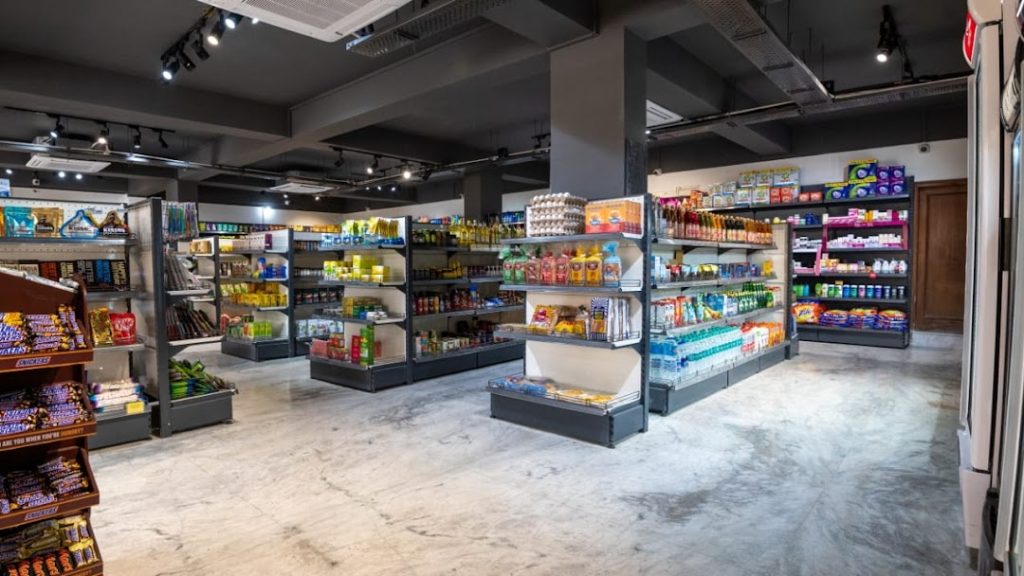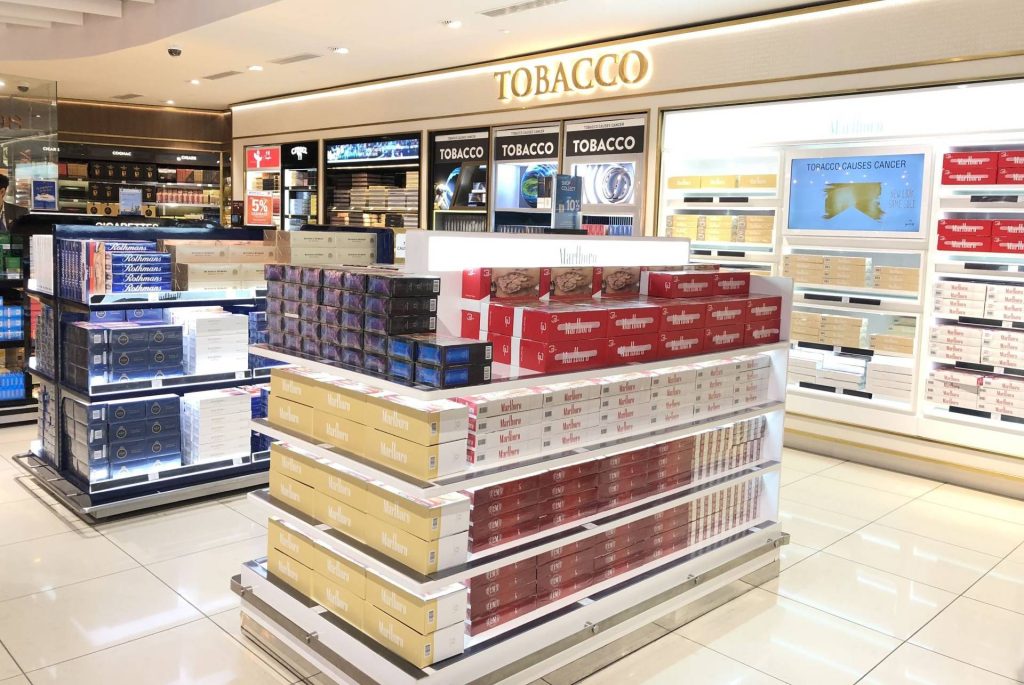
Visit To A Departmental Store Project CBSE Class 11
INTRODUCTION:
A department store is a sizable retail space that sells a wide range of products, including food, clothing, and household goods. The goal of these establishments is to offer clients a simple, one-stop shopping experience where they may get everything they require under one roof.
As part of my research, I recently had the chance to visit a department store in my city. It was a fascinating experience because I got to go around the various departments of the shop and watch how consumers interacted with the merchandise.
This report will examine the numerous facets of the department store, including its layout, product offerings, and customer service, as well as my observations and experiences from the visit. I’m hoping this report will help you better grasp how department stores operate and how important they are to our daily lives.
A department store’s definition
A department store is a significant retail space that houses a variety of goods and services. Every department of a department store typically specialises in a different category of goods, such as apparel, footwear, cosmetics, electronics, furniture, and home appliances.
Department shops are made to offer clients a simple and relaxing shopping experience. They frequently have wide aisles, neatly set up displays, and a selection of goods. Department stores are a popular place for customers who wish to spend a few hours browsing and shopping because many of them feature amenities like cafes, toilets, and lounging areas.
Sales employees, customer service agents, and managers are frequently seen working in department shops. Customers can receive individualised support from the employees, who are trained to direct them in finding the products they require, respond to their inquiries, and give instructions on how to utilise those products.
Department stores also frequently carry their own private label goods, which are sold only in the store and can be either more expensive or of greater quality than branded goods. Because of this, department stores may provide a distinctive shopping experience and set themselves apart from other retail businesses.
Overall, department stores play a significant role in the retail sector by offering customers a wide variety of goods and services as well as a convenient shopping environment.

THE “HISTORY OF THE DEPARTMENT STORE”
During the Industrial Revolution in Europe and North America in the middle of the 19th century, the idea of a department store developed. Generally speaking, Harding, Howell & Co.’s Grand Fashionable Magazine, which opened in London in 1796, is regarded as the first department store. However, the opening of the Bon Marché department store in 1852, which was followed by the opening of the Galeries Lafayette in 1893, marked the beginning of the genuine success of department stores in the middle of the 19th century in Paris.
The Marble Palace, which originally opened its doors in New York City in 1846, was the country’s first department store. Macy’s, which debuted in New York City in 1858, and Marshall Field’s, which debuted in Chicago in 1852, are two more renowned department stores in the United States.
Because they provided a variety of goods and services under one roof and were frequently found in the city center, department stores quickly gained popularity. They also offered brand-new, cutting-edge shopping ideas like window displays, escalators, and in-store dining.
Department stores rapidly grew at the start of the 20th century, and by the 1920s, they were significant actors in the retail sector. However, many department shops have struggled to remain competitive in recent years due to the growth of online shopping and bargain merchants. Despite this, department stores continue to be a significant component of the retail industry, offering customers a distinctive shopping experience and a broad selection of goods and services.
TYPES OF DEPARTMENT STORE
Shops that sell high-end goods and services including designer apparel, jewelry, and cosmetics are known as luxury department stores. Bergdorf Goodman, Neiman Marcus, and Saks Fifth Avenue are a few examples.
Mid-range department stores: These establishments provide a range of reasonably priced goods and services, including apparel, footwear, and home furnishings. Macy’s, JCPenney, and Kohl’s are among examples.
Discount department stores: These establishments sell goods and services at cheaper costs, frequently in larger quantities or at a discount. Walmart, Target, and Kmart are a few examples.
Specialty department stores: Stores that specialise in particular goods or services, including electronics, home appliances, or sporting goods, are known as specialty department stores. Best Buy, Home Depot, and Sports Authority are a few examples.
Online department stores: Stores that only operate online, such as online department stores, provide a wide range of goods and services. Amazon, eBay, and Overstock.com are a few examples.
Outlet department stores: These shops provide merchandise from premium or luxury brands at reduced prices. Examples include Saks Off 5th, Nordstrom Rack, and Bloomingdale’s Outlet.
Customers can select the department store that best meets their needs and budget because each type of store caters to a distinct market niche.
A REAL DEPARTMENT STORE VISIT:
I noticed the following on my visit to a retail store:
Layout: The store was separated into a number of sections, each focusing on various product categories, such as apparel, footwear, cosmetics, and home decor. The departments were clearly identified with signs, making it simple for customers to navigate the store.
Product selection: The store offered a wide range of products, from high-end luxury labels to more reasonably priced selections, and the products were well-organized and tastefully displayed, making it simple for clients to browse and shop.
Customer service: The staff was welcoming and accommodating, and they were there to aid clients with any queries or issues they had. They also offered personalised assistance to customers, making recommendations based on their tastes and assisting them in finding the products they needed.
Amenities: The store’s amenities, which included restrooms, seating areas, and a cafe, allowed guests to have a comfortable and convenient shopping experience.
Sales and promotions: Customers had the option to save money while shopping because the store was running a number of sales and promotions that offered discounts on a variety of goods and services.
The department store featured a wonderful assortment of goods, helpful employees, and practical conveniences, making it a terrific destination for shopping. Overall, I had a good time there.
THE “DEPARTMENTS OF ‘SHOP AND SAVE’ SUPERMARKET”
The well-known grocery chain “Shop and Save” provides a variety of goods and services. Here are some of the departments you may find in a typical “Shop and Save” store:
Fresh Produce: A range of fresh fruits and vegetables are available here, including organic and locally grown selections.
Meat and Seafood: For extra convenience, this section also provides a large assortment of pre-packaged alternatives along with fresh meat, poultry, and seafood.
Bakery: Freshly baked bread, pastries, cakes, and other baked items are available in the bakery department.
Deli: This section provides a selection of meats, cheeses, and prepared items such soups, salads, and sandwiches.
Dairy: Milk, cheese, yogurt, and other dairy items are available in the dairy section.
Frozen Foods: Foods that are frozen are available in this section, including meals, fruits, and vegetables.
Food: Non-perishable items such as canned goods, pasta, rice, cereal, and snacks can be found in the grocery section.
Health and Beauty: Personal care products, including toiletries, cosmetics, and over-the-counter pharmaceuticals, are available in the health and beauty section.
Home and Garden: Cleaning supplies, tools, and outdoor items are just a few of the products available in the home and garden section.
Wine and Spirits: Beer, wine, and spirits are available in this section, both domestically produced and imported.
The logical and intuitive way in which these sections are set up makes it simple for clients to browse the store and find the goods they require.
SUPERMARKET’S “SHOP AND SAVE” LAYOUT
Here are some aspects you could notice in a typical “Shop and Save” supermarket’s layout that are intended to maximise consumer convenience and optimise the shopping experience:
entryway: The entryway to the store is often spacious, well-lit, and equipped with baskets and shopping carts for patron usage.
Aisles: The aisles are arranged in a grid-like design, are broad enough for customers to comfortably walk them, and are well labelled with signage showing the products offered in each aisle.
Displays: You’ll find attractive displays of goods all across the store, such as those for new or seasonal items, which can assist direct customers’ attention to certain goods.
End Caps: End caps are the displays that are located at the end of each aisle, and they typically advertise or offer discounts on products to entice people to buy more.
Checkouts: The checkout area is situated close to the door or exit, making it simple for consumers to finish their transaction and depart the store. There are many checkout lanes accessible, including both self-checkout and staffed lanes.
Services: A lot of “Shop and Save” supermarkets provide extra services including a pharmacy, photo printing, and money services, which are often situated close to the entrance of the store.
Overall, the layout of a ‘Shop and Save’ supermarket is created to make it simple for customers to discover what they need and move through the shop quickly and efficiently.
A SHOWCASE FOR RECENT ARRIVALS

In order to draw visitors and stimulate sales, ‘Shop and Save’ supermarkets frequently exhibit their fresh arrivals in visible areas throughout the store. Here are several ways you could notice the display of new arrivals:
End Caps: Fresh arrivals displays are frequently found at the end of each aisle, for example, during strawberry season, you might discover a display of fresh strawberries there.
Entrance of the Store: Fresh arrival displays, such as a display of seasonal food or fresh flowers, are frequently placed towards the entrance of ‘Shop and Save’ supermarkets to draw consumers’ attention as soon as they enter.
Near Related Products: In order to entice customers to make complementary purchases, fresh arrival displays are sometimes placed close to related products, such as new varieties of pasta shown close to pasta sauce or fresh herbs displayed near spices.
freestanding Displays: For seasonal or limited-time commodities, “Shop and Save” supermarkets may also set up freestanding displays for fresh arrivals. For instance, during the fall, there may be a solitary display of various types of pumpkins, gourds, and decorative squashes.
Overall, fresh arrivals displays are a crucial component of “Shop and Save” supermarkets’ marketing plans since they can assist customers learn about new or seasonal products and stimulate further purchases.
PROMOTIONAL EFFORTS
Here are some examples of promotional efforts you might see at “Shop and Save” supermarkets, which are frequently used to draw customers and boost sales:
Sales and Discounts: Sales and discounts on particular products or product categories, such as “Buy One, Get One Free” promotions or discounts on particular products during the holiday season, are among the most popular forms of promotional efforts.
Loyalty Programs: To reward regular customers, many “Shop and Save” supermarkets provide loyalty programmes that let customers accumulate points through purchases and exchange them for discounts, free products, or other benefits.
Coupons: Customers may receive coupons in the mail, by email or text message, or in-store at the checkout. Coupons are another well-liked strategy for promoting goods and boosting sales.
Contests and Sweepstakes: “Shop and Save” supermarkets may also host contests or sweepstakes to spark interest and interaction with consumers, such as a contest where participants can win prizes by submitting their favourite recipes incorporating the store’s merchandise.
Free samples: To entice customers to try new or highlighted products and possibly make a purchase, “Shop and Save” supermarkets may provide free samples of those items.
Donations to charities: Some “Shop and Save” supermarkets organise fundraising initiatives, such as contributing a certain percentage of sales to a charity or nonprofit, to not only give back to the neighbourhood but also to entice people to buy at their establishment.
Promotional campaigns can assist boost consumer loyalty and drive sales while also promoting new or featured products and cultivating relationships with the community, making them a crucial component of “Shop and Save” supermarkets’ marketing strategy.
ADVERTISEMENT
Here are some examples of advertising you might see at “Shop and Save” supermarkets to help you understand how they sell their goods and services to potential customers.
Television ads: To advertise its brand and products, “Shop and Save” supermarkets may produce television ads, which frequently include products that are on sale, new products, or special promotions.
Print Advertisements: “Shop and Save” supermarkets also advertise their items through the use of printed materials, such as flyers, brochures, and circulars that are addressed to consumers’ homes or distributed in local newspapers.
Digital Advertising: To reach potential customers online, “Shop and Save” supermarkets may also utilise digital advertising, such as social media ads, Google ads, or email marketing.
In-Store Signage: “Shop and Save” supermarkets also use in-store signage, which can be used to draw attention to special offers, ongoing promotions, or brand-new merchandise.
Radio Commercials: To reach a local audience, certain “Shop and Save” supermarkets run radio commercials.
Billboards: “Shop and Save” supermarkets can use billboards to effectively market their name and goods to a larger audience.
Overall, “Shop and Save” supermarkets employ a number of advertising strategies to draw in new consumers and spread the word about their goods and services. By combining traditional and digital strategies, they can reach a wide audience and raise brand awareness.
SUPPORT FROM SALES STAFF
Here are some examples of how sales employees may help customers: “Shop and Save” supermarkets frequently have sales personnel present to assist customers with their shopping needs.
Product Information: Sales staff are aware about the goods supplied in the shop and are able to advise consumers about the goods, including their features, advantages, and applications.
Finding Products: Sales staff can help customers who are having problems finding a specific product by pointing them in the direction of the appropriate aisle or area of the shop.
suggestions: Sales representatives may provide product suggestions depending on a customer’s tastes or requirements, for instance, they may suggest a specific brand or product that is currently on sale.
Help with specific Requests: If a customer has a specific request, such as one for an out-of-stock item or a custom order, sales representatives can help with placing the purchase or locating an alternative item.
Assistance with Bagging: Sales representatives may help customers bag products and bring them to their cars.
consumer complaints and feedback may also be handled by sales representatives, who will strive to address any problems the consumer may be experiencing with a good or service.
Overall, sales staff play a critical role in providing customer service and ensuring customers have a positive shopping experience at “Shop and Save” supermarkets. Their expertise and assistance can help customers locate the items they need, make wise purchase decisions, and feel valued as a customer.
PAYMENT COUNTER

Here are some details you might wish to mention regarding the billing counter, which is an integral feature of every department store or supermarket, including ‘Shop and Save’:
Location: For convenience of consumers, the billing counter is typically placed at the entrance to the store, close to the exit.
Queuing System: To ensure a fair and well-organized process for all customers, most stores have a queueing system in place at the billing counter, where consumers line up to wait their turn to pay for their purchases.
Payment Methods: “Shop and Save” supermarkets often accept a number of payment methods, including cash, credit and debit cards, mobile payments, and coupons.
Item Scanning: The system generates an invoice at checkout that includes the total amount owed after scanning the customer’s purchases with a barcode scanner.
Discounts and Coupons: “Shop and Save” supermarkets may provide customers with discounts and coupons at the billing counter. The discounts can be scanned or manually input to be applied.
Bagging Assistance: Customers may ask for assistance in carrying their bags to their vehicles once the products have been scanned and placed in bags by the sales staff.
Overall, the billing counter is a crucial component of the “Shop and Save” supermarket shopping experience because it enables customers to pay for their purchases, receive discounts, and enjoy a quick and easy checkout process.
THE PHRASE “ADDITIONAL SERVICES TO CUSTOMERS”
The “Shop and Save” supermarket may provide consumers extra services in addition to its extensive product selection. Here are some examples:
Home Delivery: Customers can place an order online or over the phone and have their groceries delivered to their doorstep at a time that is convenient for them by many supermarkets, including “Shop and Save.”
In-Store Services: Providing clients with a one-stop shop for all of their requirements, some supermarkets may offer in-store services like a pharmacy, a photo center, or a bakery.
Loyalty Programs: The grocery chain “Shop and Save” may have a loyalty programme that allows consumers to accumulate points for each purchase they make, which may subsequently be exchanged for savings or benefits.
Gift Cards: “Shop and Save” supermarkets may sell gift cards, which can be bought in-person or online and used as payment or as gifts.
Customer service: “Shop and Save” supermarkets often offer a customer service counter where patrons can inquire about any problems or worries they may be experiencing.
Overall, the extra services offered by “Shop and Save” supermarket are intended to improve customer satisfaction and give customers more convenience. By providing a wide array of goods and services, the supermarket is able to meet the needs of a diversified client base.
THE “ADVANTAGES OF DEPARTMENT STORES”
Customers can profit from a number of advantages when they shop at department shops, such as “Shop and Save” supermarket.
Large Product Selection: Department stores often provide a variety of things, including groceries, household items, electronics, and clothing, giving customers a one-stop shop for all of their requirements.
Competitive rates: Because they can buy things in bulk, department stores frequently provide competitive rates, which enables them to give customers discounts and promotions.
Location: Department stores are frequently found in popular places, making it simple for customers to access them and allowing them to shop comfortably without having to travel far.
Customer service: Customers can feel more at ease knowing that department shops often have a specialised customer care team to help them with any problems or concerns they may have.
Additional Services: Department stores might provide extra services to their consumers, such home delivery, loyalty plans, and gift cards, to make their lives easier and provide them more for their money.
Overall, the benefits of shopping in a department store, such as “Shop and Save” supermarket, include a broad selection of products, competitive prices, a convenient location, excellent customer service, and other services.
THE “DISADVANTAGES OF DEPARTMENT STORES”
While shopping at department stores like “Shop and Save” grocery has numerous benefits, there are also some potential negatives. Here are some of those drawbacks:
Crowds and Long Lines: Long lineups at the register and trouble navigating the store might result from department shops being crowded, especially during busy shopping times.
Impersonal Shopping Experience: Shopping at a department store can occasionally feel impersonal due to the large number of customers and the variety of products available. Customers may not receive individualised attention from sales workers or may have trouble locating the precise products they are looking for.
Difficulty in Finding Bargains: Despite the frequently low rates department stores offer, customers may need to spend some time looking through the extensive product assortment to discover offers.
Limited Selection of Unique Items: Customers looking for more niche things may need to shop elsewhere because department shops frequently have a big assortment of common items but may not provide unusual or specialty products.
Difficulty in Finding Assistance: Finding Assistance Can Be Difficult: Customers may need to spend time looking for sales associates or customer support personnel because there are so many goods and departments.
Customers may need to balance the benefits and drawbacks before deciding whether to purchase at a department store or look into other possibilities, even though establishments like “Shop and Save” offer a variety of advantages.
CONCLUSION
For many shoppers, shopping at a department store like “Shop and Save” supermarket can be a convenient and enjoyable experience. Department stores provide a variety of products, competitive pricing, a convenient location, and excellent customer service, making them an appealing option.
Despite these possible negatives, department shops continue to be a popular choice for many customers. However, there are also potential drawbacks to shopping at department stores, such as crowds, difficulties locating assistance, and impersonal shopping experiences.
Overall, a trip to a department store like “Shop and Save” can give customers the chance to browse a variety of products, find deals, and experience excellent customer service. With careful planning and consideration of the pros and cons, customers can have a successful and pleasurable shopping experience at a department store.
Certificate of Completion
[Your Name][Your Address][City, State, Zip Code][Email Address][Phone Number] [Today’s Date]To Whom It May Concern,
I am writing to request a Certificate of Completion for my project titled “Visit to a Departmental Store. ” This project was conducted as part of my research for CBSE Class 11, and it aimed to explore the various facets of a department store and its significance in our daily lives.
I had the wonderful opportunity to visit a department store in my city and observe the interactions of customers with the merchandise and services offered. Through this project, I gained valuable insights into the layout, product offerings, customer service, and marketing strategies employed by department stores.
Throughout the project, I explored the history of department stores, their different types, and their role in the retail industry. Additionally, I focused on a specific supermarket chain, “Shop and Save, ” analyzing its layout, promotional efforts, and additional services provided to customers.
I would like to express my gratitude to my teachers for providing me with the guidance and support necessary to complete this project. The experience of conducting this research has been enriching and has given me a better understanding of the retail sector and its complexities.
I hereby request a Certificate of Completion for my project “Visit to a Departmental Store, ” which I hope will serve as a testament to my efforts and dedication in carrying out this research.
Thank you for your consideration.
Sincerely,
[Your Name]In order to download the PDF, You must follow on Youtube. Once done, Click on Submit
Follow On YoutubeSubscribed? Click on Confirm
Download Visit To A Departmental Store Project CBSE Class 11 PDF






